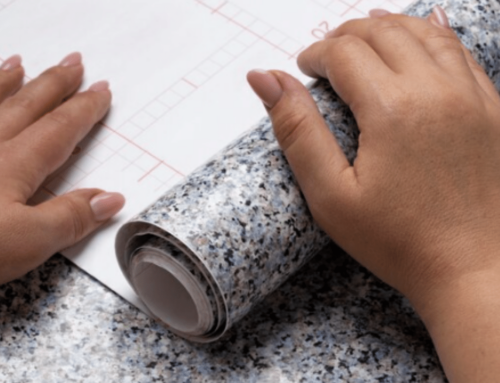Whether you’re looking to improve your flooring or make an overall makeover of your home to boost its market value, it’s essential to understand the basics of flooring installation before beginning the project.
When it comes time to install new flooring in your home, you want a company that will take the proper precautions. That means being safe and preparing well for their installation process so they don’t get called back later because something went wrong during an important task like installing hardwood floors
Let’s talk about the basics of flooring installation along with a checklist from our experts at Vinyl Flooring & Beyond so you’ll know what happens before and during the process!
Checklist for a New Flooring Installation
Remove All Breakables
First things first: take out all breakable items from the space. This refers to more than just furniture or home decor; those must be moved to another room while flooring is laid. It could also refer to lighting fixtures with ceramic or glass bowls.
Make sure to complete this step well before the flooring workers show up. First, remove all wall hangings, including family portraits, mirrors, and artwork. Also, remove the long-paneled window coverings. Finally, scan the area and remove anything in the way or breakable.
Determine Who Removes Furniture, Appliances and Adds Subfloor
Make sure to ask for and demand an all-inclusive project price when your flooring installer provides you with an installation estimate. An all-inclusive quote includes additional, practical services like moving bulky furniture and appliances and the installation cost.
If the project requires it, you may need to pay for additional services like preliminary subfloor preparation or full removal and replacement. Avoid moving heavy furniture and appliances on flooring installation day, at the absolute least.
Disconnect Gas Appliances and Electronics
You need to exert more effort than just hard lifting when it comes to your appliances. First, make sure you plan to turn off all electrical outlets and gas hookups in the rooms where the new floor installation will take place. Anywhere from kitchen to laundry facilities could be referred to as such.
This is a simple DIY task for many homeowners. However, if unsure, have a professional properly turn off the gas and power.
Determine New Floor Height
Verify the new floor height before beginning installation. You might also need to adjust the doors if there is any change in the floor’s height. If not, your new flooring might make it impossible for doors to open and close smoothly.
Many flooring varieties, including laminate and vinyl allow either glue-down or floating installations. Be sure that the interior and exterior doors can swing open and shut correctly with the added height because these floorings make it convenient to install over most existing floors.
Clean Out Closets and Storage Areas
Remember to prepare all the crevices and nooks when getting ready to lay a new floor. Remove everything from your spare closets and storage spaces before installing new flooring.
Empty the pantry and the adjacent areas if you replace the kitchen floorboards (like the mudroom or laundry room, for example).
Homeowners frequently overlook these hidden spaces as installation day draws near because they are too busy getting ready. Although you’ve taken down the priceless family portraits from the walls and the large pieces of furniture, you often overlook the closets and storage spaces.
Provide Dust Control
When laying a new floor, dust can cause issues, especially when installing unfinished hardwood. A competent professional will create a plan to prevent dust from adhering to your new flooring, but it’s always a good idea to take precautions in case.
Any spaces that won’t be sanded should be sealed off. This entails more than just closing doors; it also entails lining doorways with plastic sheets and taping them shut. To ensure that dust stays where it is, choose a barrier system like the ZipWall.
Consider additional exit points and gaps where airborne particles can enter, such as heating ducts. By choosing from Vinyl Flooring & Beyond’s wide selection of gorgeous, prefinished hardwood, all of this preparation and clutter may be avoided.
Remove the Doors
Remove any doors from their hinges in the room where the new flooring will be put down. The easiest way to ensure that each door is taken out and safely stored is to do this yourself. Professional flooring installers know to do this before starting.
The doors can be stacked in a room that is closed off after removal. A soft blanket should be placed between each door to prevent unintentional scratches. Remember to store all the hinge pins in a box or plastic bag for easy tracking.
After they have completed installing your new floor and left, carefully reinstall each door on its corresponding hinges.
Remove the Baseboards
Remove any additional shoe moldings that are lining the bottom edges, as well as the baseboards. You can quickly remove your baseboards using a pry bar depending on the design of your baseboards, such as ranch or colonial.
If the baseboards in your home are tall and include a small quarter-round shoe molding, you can remove this portion rather than the full baseboard.
Remove the Door Trim
Eliminate all case moldings and doorway stop moldings. If not, these places could develop into significant problems—even more so than the baseboards. The bottoms of the molding are frequently chopped by flooring contractors so that the new flooring can be slid underneath rather than removed. Make yourself a proud homeowner and remove the door trim before installation.
This will give the area a more upscale appearance while enabling the flooring workers to precisely place the flooring beneath the door frame. After the flooring has been installed, you may go back and trim the old case molding, reinstall it, or add new molding to your doors to give your home a fresh look to go with your new floors.
You should leave this type of trim work to the experts if you lack experience. However, your estimate should take this kind of labor into account. Just be honest about what you’re hoping to see visually.
Thoroughly Clean All Floors
It’s a good idea to minimize the quantity of dust, mold, and mildew you encounter when installing a new floor. If you can, check the subfloor to ensure there is no water damage or other problems that need to be fixed before you begin. If you intend to install fitness flooring and convert your basement into a home gym, you should clean the concrete before making any improvements.
Clearing your floors of dust and other debris will also improve the indoor air quality in your home and the general health of your family.
Secure Your Pets
Ensure your animals are contained safely, or consider asking a neighbor to look after them temporarily. Keeping them away from installers and the prep area will guarantee their task is done as swiftly and uninterruptedly as possible. The sound of a buzzsaw may terrify and make them uneasy.
You may consider adding pet-friendly flooring, including luxury vinyl plank and tile, which resist scratches and provide a waterproof barrier to guard against unintentional spills.
Ready for a New Flooring Installation?
Are you ready for some brand-new fashionable floors now that you have a better understanding and comprehensive checklist of what goes into a flooring installation project?
Vinyl Flooring & Beyond is here for you from the moment you begin browsing through potential flooring ideas to the minute your floors are completed. We bring years of experience and a customer-focused approach to each job we do.
Contact us today for a free estimate and get ready to give your home a whole new look!




